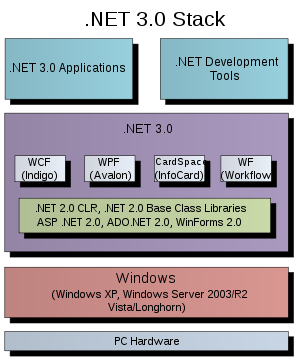This article may be too technical for most readers to understand. (July 2019) |
| Developer(s) | Microsoft |
|---|---|
| Initial release | November 21, 2006 |
| Stable release | WF45
/ August 15, 2012 |
| Operating system | Microsoft Windows |
| Platform | .NET Framework |
| Type | Software framework |
| Website | docs |

Windows Workflow Foundation (WF[2]) is a Microsoft technology that provides an API, an in-process workflow engine, and a rehostable designer to implement long-running processes as workflows within .NET applications. The latest version of WF was released as part of the .NET Framework version 4.5 and is referred to as (WF45).[3]
A workflow, as defined here, is a series of distinct programming steps or phases. Each step is modeled in WF as an Activity. The .NET Framework provides a library of activities (such as WriteLine, an activity that writes text to the console or other form of output). Custom activities can also be developed for additional functionality. Activities can be assembled visually into workflows using the Workflow Designer, a design surface that runs within Visual Studio. The designer can also be hosted in other applications.
Encapsulating programming functionality into the activities allows the developer to create more manageable applications; each component of execution can be developed as a Common Language Runtime object whose execution will be managed by the workflow runtime.
- ^ "Windows Workflow Foundation (WF) FAQ". Microsoft. 22 December 2018. Retrieved 25 January 2021.
WF is an acceptable abbreviation for Windows Workflow Foundation. WWF is not acceptable because it is a registered trademark of the World Wildlife Fund
- ^ Abbreviation WWF is not used because it's trademarked by World Wide Fund for Nature[1]
- ^ "A Developer's Introduction to Windows Workflow Foundation (WF) in .NET 4". Retrieved August 21, 2012.